The year 2015 was declared the International Year of Light (AIL) by the United Nations.
2015 is going to celebrate the light and astronomy is a science essentially based on the observation of light in all its forms.
To answer the great scientific questions in the field of astrophysics, for a century humanity is investing billions of dollars in telescopes more and more powerful. The main reason for this investment is to capture full information that could help us to understand the history of the universe and thus indirectly our own history.
Since the 1990s, the most beautiful images of the universe in the visible range, come from the Hubble Space Telescope (HST). Hubble Space Telescope is a telescope in orbit at 560 km altitude and it completes one revolution of the Earth every 100 minutes. Hubble was able to observe during long breaks, deep universe. It is a "machine back in time" that allows astronomers to see galaxies as they were there 13 billion years ago, just 600 million to 800 million years after the Big Bang.
From other telescopes have complemented the observations of light other fields of the electromagnetic spectrum.
Since 1999, the Chandra telescope X-ray Observatory, exploring the universe in high-energy light. Chandra is placed on a high elliptical orbit 16 000-133 000 km which enables long periods of continuous observation in the field of X-rays.
| | In the infrared is the Spitzer Space Telescope which collects light from 2003. Spitzer observed mainly the chemical composition of the universe. He is specialized in the formation and evolution of primitive galaxies, the birth of stars and planets. This information masked by dust nebulae are visible in the infrared. Placed on a heliocentric orbit parallel to that of the Earth, it goes around the Sun in 372 days.
All telescopes that will succeed the three giants will be adapted to the observation of a specific range of the electromagnetic spectrum, i.e. at different wavelengths of light. Indeed, the combined images of large observatories with complementary characteristics show another facet of cosmic objects. Another way to see the universe as all information about the universe are provided to us by the light.
2015 will reveal our history, still mysterious, but more and more luminous, because matter and light are deeply linked...
NB: Between the wavelength (λ) and frequency (ν) is the following relationship: ν = c / λ
ν = wave frequency in hertz
c = speed of light in vacuum in m / s
λ = wavelength in meters | |  Image: In this image, we see a bubble expanding debris called SNR 0519-69.0. This massive star exploded in the Large Magellanic Cloud, a satellite galaxy of the Milky Way. These star debris are gas at very high temperatures, several million degrees, observable (in blue) in the X-rays with Chandra. The outer edge of the explosion (red) and the stars in the field of view are seen in visible light by the Hubble Space Telescope. Credit: NASA. |
Our Universe is old 13.7 billion years, if the light is from the beginning, it does not spread from the "birth of the universe".
Initially, the entire system is in a state that mathematicians call a "singularity". In this singularity, some physical quantities such as density or temperature are endless. Everything is in a theoretical state, yet it is the beginning of our history, that of light.
Very early the first force, the strong nuclear force will assemble quarks, 3 by 3 to give protons and neutrons to form the hydrogen nuclei.
At a certain density and a certain temperature (≈3000 K), the photons get complete freedom. When the Universe has expanded sufficiently, the space between each matter particle (proton and electron) is sufficient for the light escapes. The light that then appears, will be able to travel with the inflationary space.
The Universe is not opaque but transparent.
380 000 years after the beginning, the material era appears with the electromagnetic force, which built the first atoms of hydrogen and helium.
| | The ever expanding universe and cooling sees the gravitational force consolidate together the atoms into increasingly complex structures. This is the birth of galaxies harbor in their hearts the stars of the sky, the stars we see evolving for 13 billion years.
In stars, protons fuse to form deuterium nuclei as processes related to the weak nuclear force, the weak nuclear force.
These cores of matter are then used to build the edification of the pyramid of the more massive nuclei (helium 3, helium-4, lithium, beryllium, boron, carbon,...).
The energy released is carried to 98% in the form of light energy by photons. It is this information of light that we capture today and that allows us to reconstruct our history.
The light has created matter and antimatter, and when matter and antimatter meet, they restore the light that created them.
Light and information are linked then 2015 will be the International Year of Light and Information. | |  Image: The first light of the observable universe seen by the Planck mission (March 2013). This picture shows traces of the first moments of creation about 380,000 years after the Big Bang. Image Credit: ESA Planck collaboration. |
 Automatic translation
Automatic translation




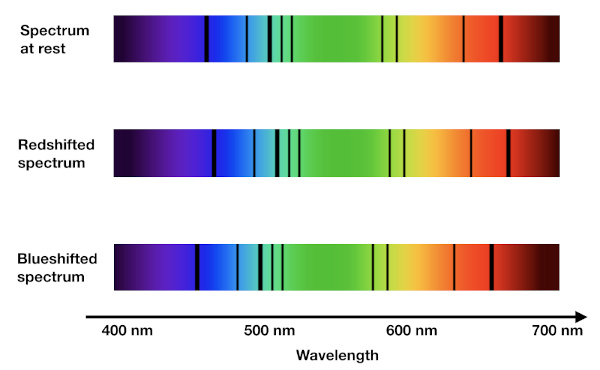 Redshift calculation (z)
Redshift calculation (z)
 Spectacular airglow in France
Spectacular airglow in France
 Light, all the light of the spectrum
Light, all the light of the spectrum
 The spicules of the Blue Sun
The spicules of the Blue Sun
 Global dimming
Global dimming
 Solar pillar, a link between sky and earth
Solar pillar, a link between sky and earth
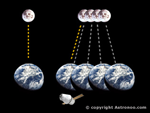 The speed of light and space-time
The speed of light and space-time
 The Universe of X-rays
The Universe of X-rays
 Diamond rings above the Pacific
Diamond rings above the Pacific
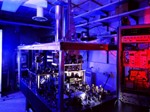 The incredible precision of the second
The incredible precision of the second
 Effects of light aberration
Effects of light aberration
 Radioactivity, natural and artificial
Radioactivity, natural and artificial
 Why do elementary particles have no mass?
Why do elementary particles have no mass?
 The shadow of the black hole
The shadow of the black hole
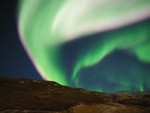 Dawn and its rays of light
Dawn and its rays of light
 The Blue Moon
The Blue Moon
 Gravitational illusion or gravitational lens
Gravitational illusion or gravitational lens
 The incredible illusion of the same color
The incredible illusion of the same color
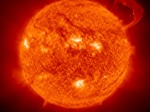 Perfect storm and devastating effects
Perfect storm and devastating effects
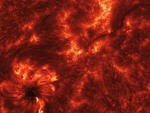 The infernal journey of the photon
The infernal journey of the photon
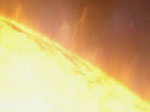 The power of the Sun
The power of the Sun
 Bioluminescence of living organisms
Bioluminescence of living organisms
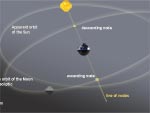 Eclipses explained by the plane of the orbit
Eclipses explained by the plane of the orbit
 Super Moon
Super Moon
 Laser light
Laser light
 We do not see with our eyes but with our brain
We do not see with our eyes but with our brain
 Differences between heat and temperature
Differences between heat and temperature
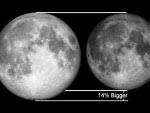 Big Moon Illusion
Big Moon Illusion
 Zodiacal light, the diffuse white glow
Zodiacal light, the diffuse white glow
 Explanation of the 8 of the analemma
Explanation of the 8 of the analemma
 The colors of the rainbow
The colors of the rainbow
 Shadow of the Earth anti-twilight ark
Shadow of the Earth anti-twilight ark
 How many photons to heat a cup of coffee?
How many photons to heat a cup of coffee?
 Spectroscopy, an inexhaustible source of information
Spectroscopy, an inexhaustible source of information
 The Cherenkov light
The Cherenkov light
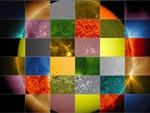 The lights of the Sun
The lights of the Sun
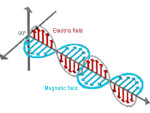 What is a wave?
What is a wave?
 Planck's equation and black body light
Planck's equation and black body light
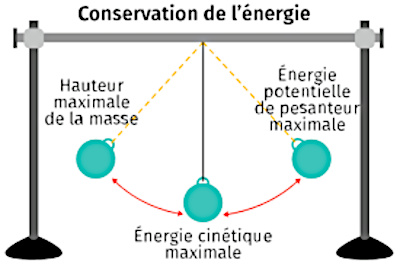 Energy Conservation
Energy Conservation